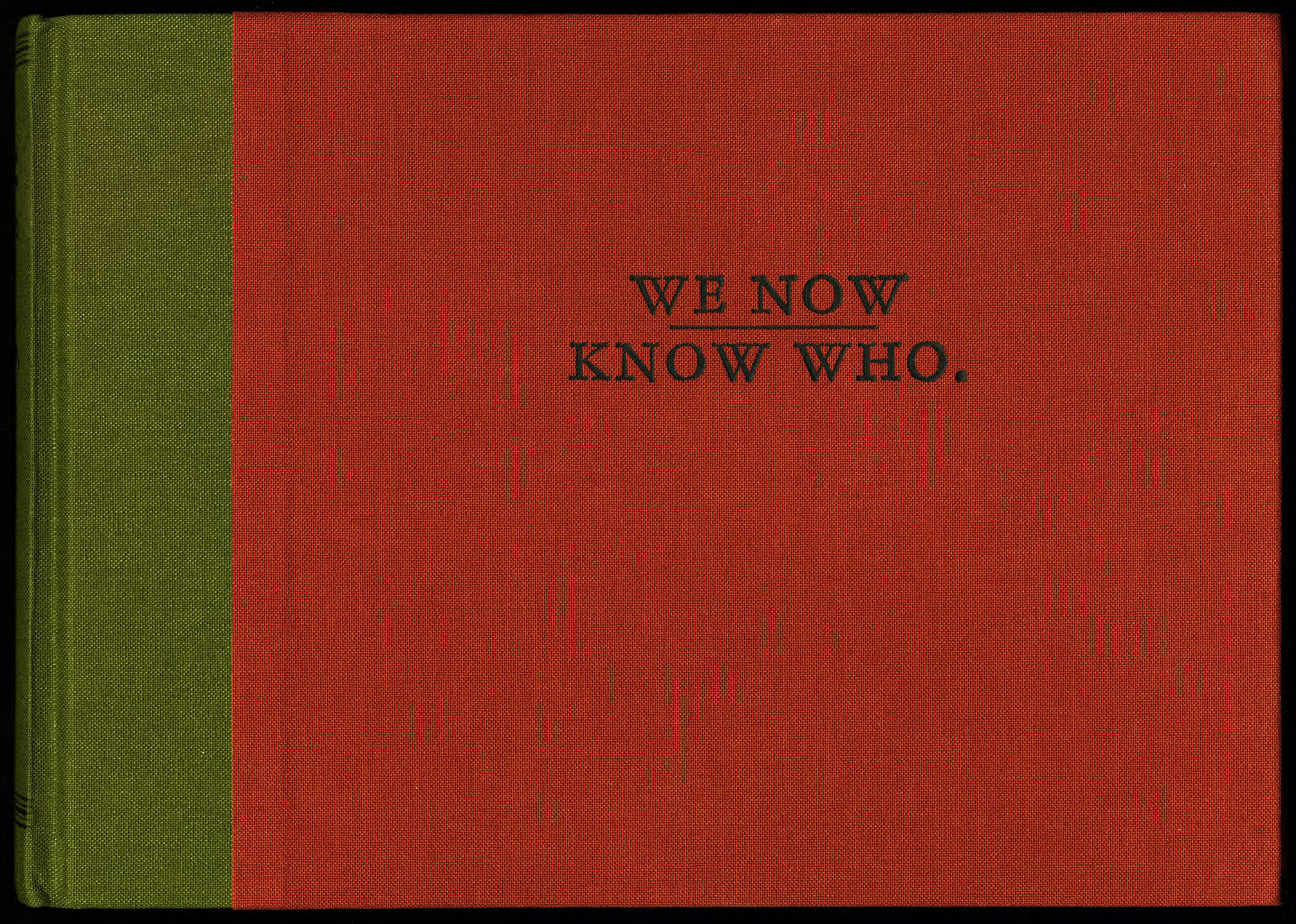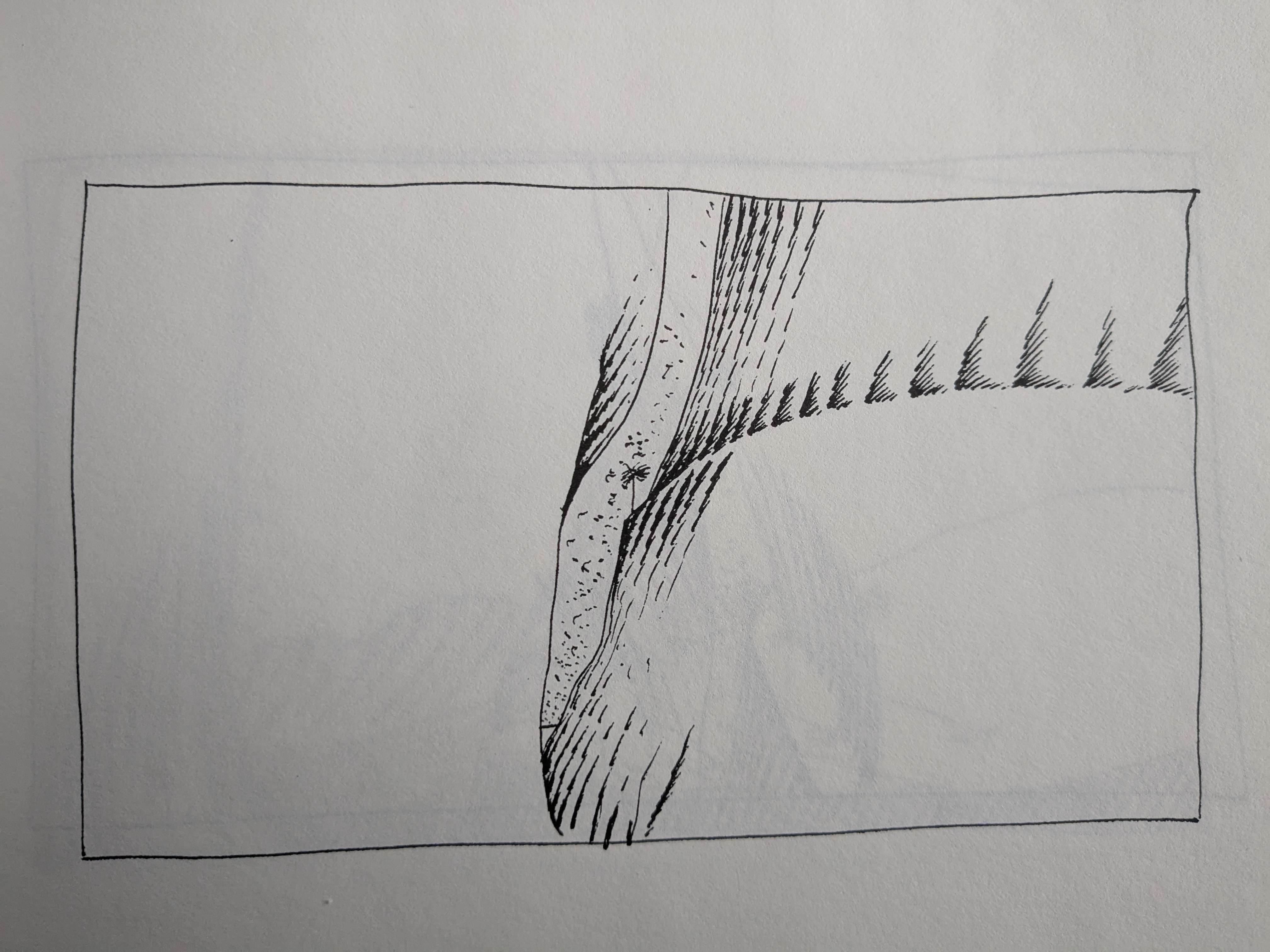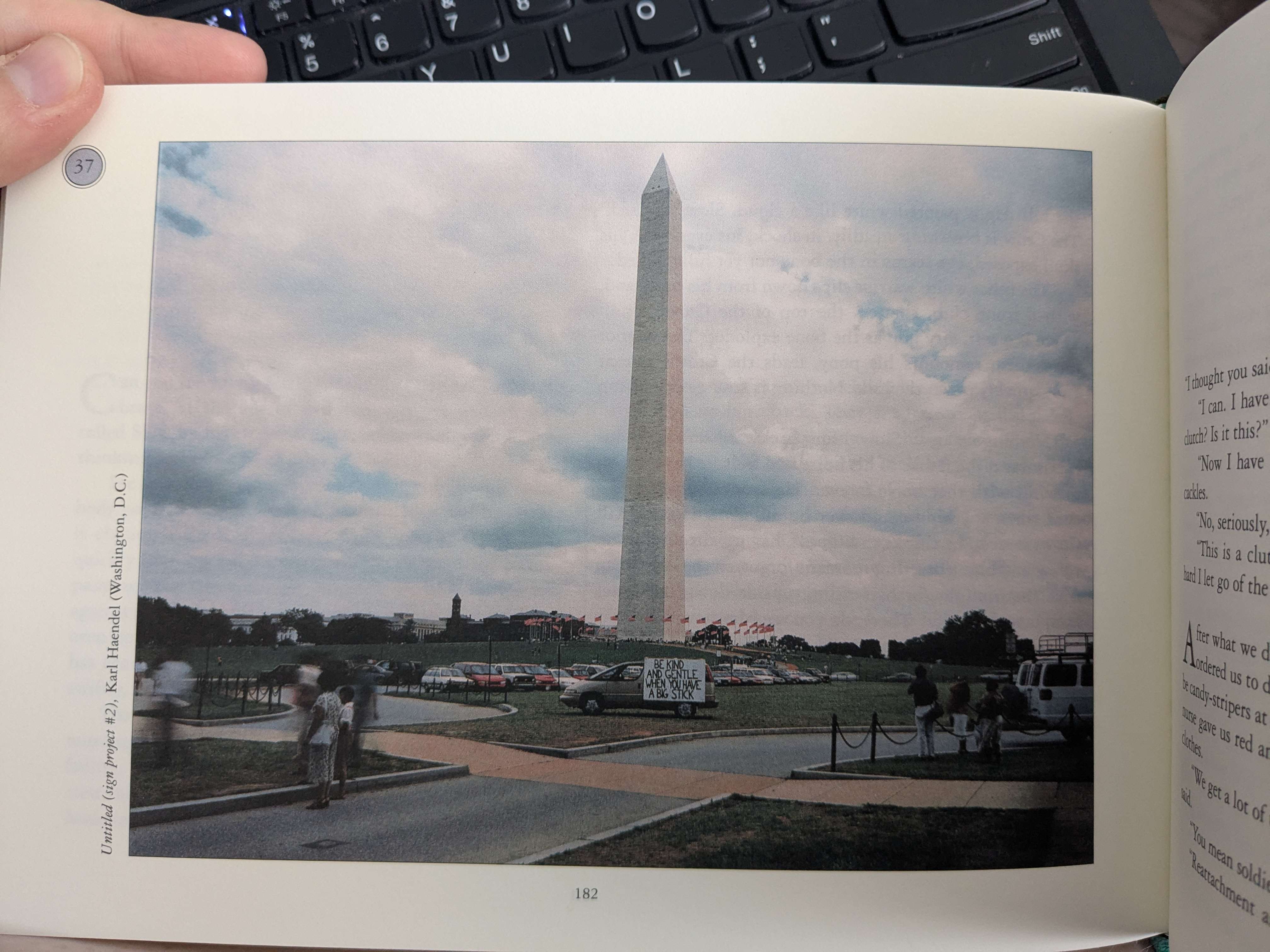
| release year | 2001 |
|---|---|
| type | literary journal/musical accompaniment |
| listened to on | 2025-05-25 |
| favorite | Hard Truths (Mark O'Donnell) / The Truth In Your Words |
| links | tmbw |

The sixth issue of Timothy McSweeney's Quarterly Concern (hereby referred to as TMBG vs. McSweeney's for this issue), a literary journal edited by Dave Eggers, contains a CD from They Might Be Giants. While we were easily able to find the tracks on Soulseek, something was missing. Something obvious. We couldn't find a PDF of the damn thing.
So Alice bought it for 10 bucks from a used bookstore on the internet, and I am holding it in my hands. This is going to be a very strange writeup, because most of what I am doing is discussing the strange things that this journal does despite the fact that you probably cannot read it. I lucked out by finding it for 10 bucks. It usually sells for a lot more. My copy is near-mint.
The issue opens with DIRECTIONS FOR USE. It pushes the fact that the CD included with the journal, featuring many tracks from TMBG (and some not) that correspond with entries in the journal. It says explicitly:
Please note that you may listen to Tracks without reading their Pieces, and you may read Pieces without listening to their corresponding Tracks. But this is not recommended. You fucking bastard.
So I guess we were right when we didn't want to have it without the text. If there's enough demand we will figure out how to scan this thing, unless someone can snipe a PDF for us, in which case we'll link it here.
Welcome to Timothy McSweeney's journal of music and prose, I guess?
The journal opens with a meditation on learning that Timothy McSweeney is in fact, a real person, conjoined with a track that says that he takes a pen and paper and he gets things done. We then turn to (Notes from the Middle World) combined with the track MOR.
Notably, MOR is about 17 seconds long, and (Notes from the Middle World) is about 9 pages long. As a result, it is necessary to loop the track on the CD player, resulting in a haunting, repeating, eerie noise that sounds like a bomb siren. When taken in conjunction with the text by Breyten Breytenbach, one of the most important poets in Afrikaans literature, it gives the "MOR" he coins — the middle world, the transient state of uncitizens — an ethereal, Othering feeling. This is one of the many ways that TMBG vs. McSweeney's attains a feeling of ergodic literature via its interactivity, and it makes the enclosed anti-colonial screed even more effective. MOR is nothing but a construct of the imagination, an unstate full of uncitizens where the accordion-y bomb siren plays. Wasn't it Ronald Reagan, that masterful deconstructionist (or destroyer?), who claimed that reality is but an illusion that can be overcome?
From there, we're introduced to Karl Haendel Drove Around the Country in a Minivan and Painted Slogans on Plywood and Showed Them to People to See What They Thought. This is a series where Karl Haendel... well, yes. There are 11 sign photos throughout TMBG vs. McSweeney's, each with a corresponding track. Dollar For Dollar, a song featuring strange backwards synths and the line Dollar for Dollar, Invest in the Past is coupled with a photo in DC of Karl Haendel's van with a sign saying exactly that. There is a sense where it makes the image matter more, at least to me. I don't know how.
Later on in the book, for Ian Frazier's Eulogy for Saul Steinberg in conjunction with John Linnell's West Virginia, you have to rotate the book in order to read it. More ergodic stuff. In a way, this is kind of the precursor to the BOOK book. It features a lot of the same tricks, though the BOOK book doesn't really have prose in it, just lyrics typeset strangely.
Some pictures by Walter Koenigstein in his Affair Number Six, a 1972 notebook sampled in McSweeney's, display desolate, surreal landscapes that seem to be decaying and falling in upon themselves. This is then continued by TMBG's track Koenigstein, alternating between channels, repeating "yeah, right" over and over. As with MOR, there's an intense surreal feeling that these tracks manage to create.

Marfa, Revisited by Sean Wilsey combined with Michael Meredith's Daphne (Soundtrack) somehow manages to create a perfect portrait of a place — that being Marfa, TX. I wonder if it's still there.
Interestingly, the version of (She Thinks She's) Edith Head on this is the Long Tall Weekend version and not the Mink Car version, despite this coming out in '02. This vindicates my generalized dislike of Mink Car. It accompanies Untitled by Amy Stillman, a surreal picture of a human-like creature with many heads, some becoming objects towards the tip.
Bangs (song) is paired with The Girl With Bangs, in which Zadie Smith states What is the purpose of metaphor, anyway, if not to describe women? — Me too, buddy. It is occurring to me that no amount that we could possibly write about this strange journal could possibly do it justice for you.
I want to talk to you about a moment. The other day, Rachel (who is one of us, who is me, who isn't me) was sitting on the bus listening to Steely Dan's Aja, I think, and then she switched over the album to The Mountain Goats's Sweden. We've been trying to give up our phone recently, attempting to use it as little as possible. It's been great for our mental health, all things considered, to just... not post, to be AFK for hours, days even. It's nice to unplug.
One of the side effects of this unplugging, in conjunction with being on better medication (112.5 milligrams of Effexor XR daily and beta blockers on demand) and having a relatively stable job (we do remote tech support now) and having loving, caring partners and a stable support system and having lived in Philadelphia for a full year and reading Karl Marx's Capital at least the first three chapters — we have to get back to that — and writing, writing about everything, writing down all the observations we can find, about They Might Be Giants, about strange aliens privately called ideophages that are descending from the Inclinosphere, about Mulholland Drive, about us... one of the side effects is that we begin to see beauty in things. Rachel was staring at the little red box that says "STOP" on all the SEPTA buses, entirely tuned in to The Recognition Scene by The Mountain Goats, when it clicked.
In that moment, we saw the labor that went into every single component of the bus around us, the seats, the red STOP button, the metal pipes, the clothes on our body. We saw it as a giant, collective process, from those who began to synthesize the raw materials to make the plastic, to those who dyed it, to those who cast it. We thought that it was beautiful, to see the world around us in this way; as a massive coalesced blob of human labor, of people creating things for other people. We thought it was beautiful to intuit.
In that moment, we thought that G-d was in everything, and everything was G-d. This is, for whatever reason, the emotion that I am feeling now, looking at all this art in McSweeney's; a strange little piece of side-material that's tangentially related to a band we like. It's all just... people, doing things. I don't think I can put that into words for you; I don't think I can sum up that emotion. I can only say what I've already said, unedited, because we're catching a screening of Louise Weard's Castration Movie at 6 and it's 2:27 PM and I'm still not done writing this.
Anyway.
Interestingly, Billy by the Bay by Ann Cummins is paired with spoken words of the last 5 paragraphs of the text (not by TMBG). This leads to a massively disorienting reading experience, which adds to the themes of confusion and rapid, intense hollering.
There are actual postcards in here that you can cut out, in Barry Blitt's Vacation Postcards conjoined with TMBG's Mosh Momken Abadon (misspelled as Abadan in the book). On the backs, where you put the stamps, they say Put your stamp here before releasing card, The Post Office will not deliver this without a stamp affixed, Why do you have to argue about it?, and Just stick the stamp on and be done with it., respectively.
Tough Day for the Army: in the Beginning by John Warner conjoined with The Army's Tired Now by TMBG adds an interesting character, a melancholy one, to what is otherwise a strange piece, with a collectively moving army that acts in unison to do food photography and cooking. The army nods in the affirmative. Armies know of these things.
Lydia Davis's Oral History with Hiccups, which has various w ords typeset like th is, combined with Drinkin', adds to a kind of strange and whimsical nature to the piece. I love the typesetting here, even though I don't have much to say about the written word itself.
Gazing out Toward by Lawrence Weschler has a fold-out, and Gazing out Toward by They Might Be Giants is John Linnell saying "Quit looking at me" speed up played backwards while rapidly increasing in tempo. Holy shit? The entire thing is a meditation on a frame of sailors from Battleship Potemkin. The music grants an anti-cinema to it all.
Chris Ware's A Very Sad Story About a Frog and a Banjo, Not at All Appropriate for Children is a comic about a frog and a banjo that's "very sad" and not appropriate for children. It's led in with metatext about some questions that Chris Ware was apparently sent by the editors (who do not exist), asking him if he means to do children harm because he is a bad person. It's coupled with a song by Mike Doughty, who did some vocals on Mink Car that adds to the kind of self-referential, meta feeling of how people do maligned interpretations of art.
TMBG vs. McSweeney's, in all its pieces, is obsessed with interpretation, with maligned interpretation, with added context. In a way, the music-text art object becomes a very different art object than their disjoint parts, each seeking to "interpret" the other. This nature doesn't necessarily bolster either of the pieces; instead, it changes them. It makes them new. It's more of the way that TMBG seems to talk about their own work; in this case, they begin to set up some of the themes of interpretation that would show up on later works, like Join Us's Three Might Be Duende.
Dave Ford's Drawings by Trucks discusses work by Dave Ford, in which he created inhuman art by hooking up a bunch of pencils to bottles at the top of a truck and then drove around. The results are beautiful, and strange, and inhuman, and inexorably in transit; the same way that TMBG's Art Mover, paired with it, sounds.
Hard Truths by Mark O'Donnell is a very short "screenplay" that I can not hope to explain, but its conjunction with The Truth In Your Words by TMBG easily elevates it to my favorite. ...There is no justice. Lucky for me! says the businessman. HE GRINS. FADE-OUT.
Back to Karl Heindel's photos. I want to highlight this one. I just like it, is all.

By this point in the book, the songs become short, and lose their lyrics. It's explained early on that TMBG was running out of time by now. It's understandable. This book sure is a large undertaking.
The book closes out with the CD itself. It's almost blank, but has a few words on it:
This CD was going to be left blank, because it is a pretty thing when blank, but then we remembered how likely you were to leave it atop your stereo, uncased, and thus how likely it was that you would then forget what this CD was, exactly whose music was on it (in it?), and then you would maybe even go and record over it—songs by other bands, even—using some terrible new software, and in doing so make us all sad. So we put some words on it. This. Hi.